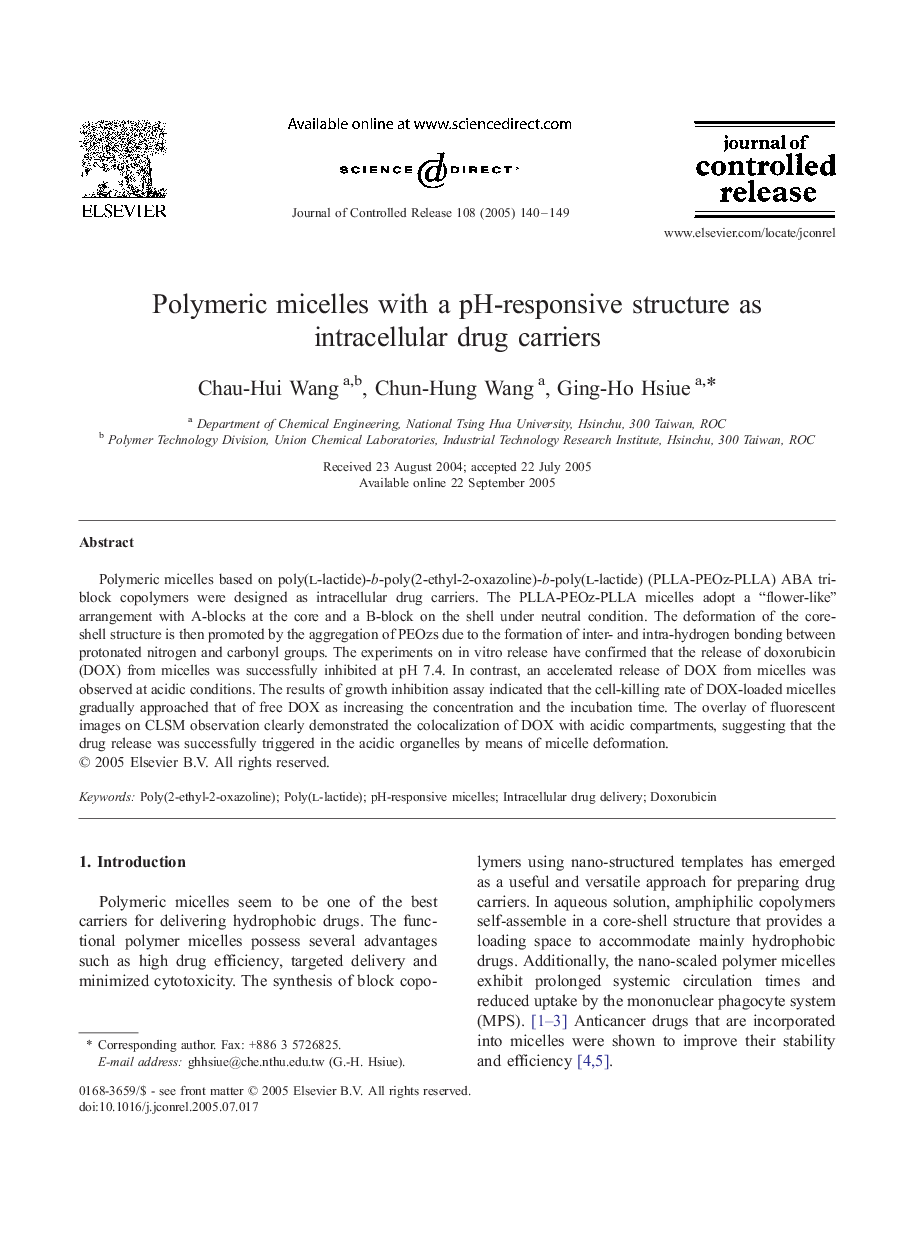| Article ID | Journal | Published Year | Pages | File Type |
|---|---|---|---|---|
| 10613418 | Journal of Controlled Release | 2005 | 10 Pages |
Abstract
Polymeric micelles based on poly(l-lactide)-b-poly(2-ethyl-2-oxazoline)-b-poly(l-lactide) (PLLA-PEOz-PLLA) ABA triblock copolymers were designed as intracellular drug carriers. The PLLA-PEOz-PLLA micelles adopt a “flower-like” arrangement with A-blocks at the core and a B-block on the shell under neutral condition. The deformation of the core-shell structure is then promoted by the aggregation of PEOzs due to the formation of inter- and intra-hydrogen bonding between protonated nitrogen and carbonyl groups. The experiments on in vitro release have confirmed that the release of doxorubicin (DOX) from micelles was successfully inhibited at pH 7.4. In contrast, an accelerated release of DOX from micelles was observed at acidic conditions. The results of growth inhibition assay indicated that the cell-killing rate of DOX-loaded micelles gradually approached that of free DOX as increasing the concentration and the incubation time. The overlay of fluorescent images on CLSM observation clearly demonstrated the colocalization of DOX with acidic compartments, suggesting that the drug release was successfully triggered in the acidic organelles by means of micelle deformation.
Related Topics
Physical Sciences and Engineering
Materials Science
Biomaterials
Authors
Chau-Hui Wang, Chun-Hung Wang, Ging-Ho Hsiue,
